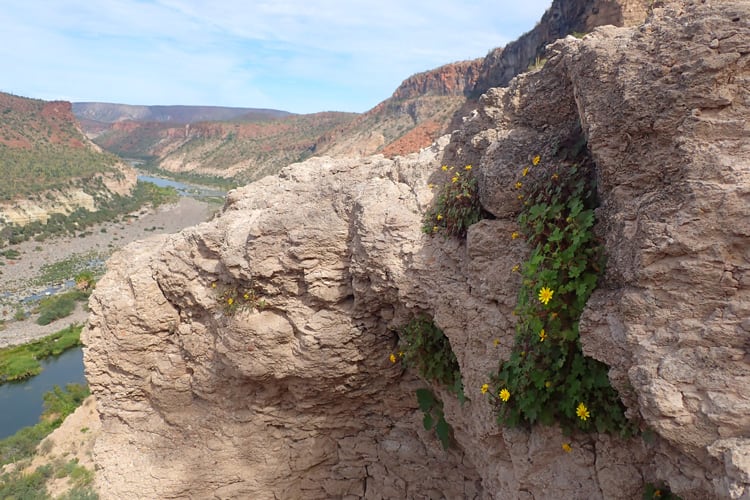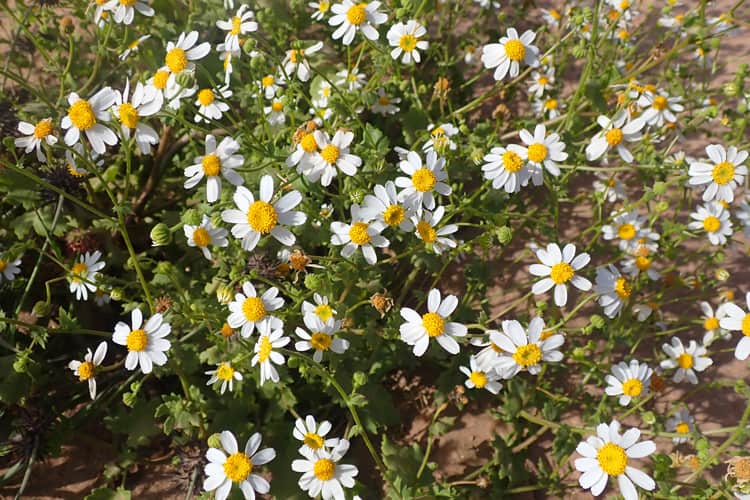
At a time when climate change is making many areas of the planet hotter and drier, it’s sobering to think that deserts are relatively new biomes. For instance, the widespread arid regions that currently cover much of western North America only emerged 5 to 7 million years ago. Understanding how some plants invaded and thrived in these harsh biomes thus presents a unique opportunity, allowing scientists to assess how today’s ecosystems will fare in a drier future.
However, a new study from the University of California, Berkeley — although highly revealing — doesn’t bring good news. Researcher Isaac Lichter-Marck and Bruce Baldwin, UC Berkeley professor of integrative biology, studied rock daisies, a group of plants that invaded deserts millions of years ago. The study shows that these pioneers came pre-equipped to deal with heat, sun, and drought, having developed adaptations while living on dry rock outcroppings and even in tropical forests.
“The history of rock daisies suggests that when deserts emerged, those plants that had the necessary pre-adaptations to take advantage of new conditions were the ones that thrived,” says Lichter-Marck in a statement.
From fossils to rock climbing: a window into desert plant evolution

Botanists have long known that when plants invaded deserts, they diversified quickly to fill the many niches created by the new habitat. Paleontologists have also noted similarities between fossilized plants that grew tens of millions of years ago, long before the widespread proliferation of deserts seen now when they cover a fifth of Earth’s surface, and desert plants today. However, these observations present a dilemma: Did iconic desert plants, like the stately saguaro cacti, the flaming ocotillos and the Seussian agaves, adapt to arid conditions only after they invaded deserts or were they already preadapted to thrive even in such harsh conditions?
“Plants that live on rock outcrops face many of the same challenges as those living in a dry, desert habitat,” Lichter-Marck said. “Rock outcrops tend to be exposed to UV light, wind and dry, desiccating conditions, as well as heat and frost. They also tend to be more exposed to herbivores.
“The ways that plants deal with them are diverse, but they usually involve some kind of specialized root morphology that helps them to anchor in rock outcrops, as well as deal with the heightened arid conditions. And they tend to have smaller leaves, or leaves with a dense covering of hairs that help buffer them against drought and block sunlight, including UV light. They also tend to have heightened chemical defenses against herbivores, because it takes a lot of energy to regenerate after being munched.”
Researchers collected hundreds of specimens of rock daisies, sometimes in arduous working conditions as some of these plants bloom on vertical rock faces or sky island mountain ranges. Thankfully, Lichter-Marck is an experienced mountaineer, which shows that you can never have enough diverse skill sets when doing biology fieldwork.

With these samples in hand, the researchers then set about sequencing their DNA and cataloging their particular characteristics, such as where exactly they grew, whether they were a herb or a shrub, or what type of root system they had. This data was then compared with fossilized daisies in order to map a rough evolutionary timeline that might point to the moment the lineage shifted into desert biomes.
The analysis showed that most rock daisies, especially those in the genus Laphamia, already possessed some adaptations for heat, aridity, wind, and sun well before they appeared in desert landscapes. The same likely applies to other successful desert plants like cacti, which are known to inhabit rock outcrops.
“What this means is that the strategies for drought tolerance that are so characteristic of desert vegetation might not actually represent responses to the dry conditions found in deserts. Instead, they could be traits that evolved earlier in association with much older and more stable dry microclimates, such as rock outcrops in tropical settings,” Lichter-Marck said.
This research is significant today as accelerating aridity due to climate change is forcing plants to adapt much faster than in the past. If adaptation to arid conditions was only possible for plants that had already evolved to deal with such stresses, many plants today may not have the necessary genetic tools to survive.
Next, the researchers plan on extending their research to plants that grow on rock outcrops in Hawai’i. This time though, there will be less dangerous rock climbing, as they hope to use drones to collect samples instead.
The findings appeared in the journal PNAS.









